By Uma Purkayastha
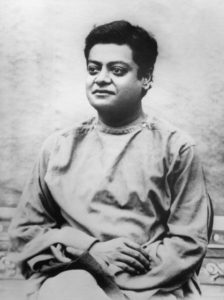 Swami Vivekananda, one of the most conspicuous figures in the domain of Indian history, is known as the Patriot Saint of India. He was more a patriot than a saint, more a social and educational reformer than a meditator, more a worker than a preacher. His life itself was his message.
Swami Vivekananda, one of the most conspicuous figures in the domain of Indian history, is known as the Patriot Saint of India. He was more a patriot than a saint, more a social and educational reformer than a meditator, more a worker than a preacher. His life itself was his message.
It was on April 27, 1901, that Swami Vivekananda delivered his invaluable speech from the auditorium of Shillong’s Quinton Hall, presently known as the Ramakrishna Mission Vivekananda Cultural Centre. It was a great historical event because it was his last public address before he left for his heavenly abode within a year.
Sir Henry John Stedman Cotton joined the Indian Civil Service in 1867, and his first posting was at Midnapore in West Bengal. He rose to be the Chief Commissioner of Assam from 1896 to 1902 and had an opportunity to come in contact of Swami Vivekananda.
 In April 1901, Swamiji along with his mother came to visit the Kamakhya temple in Guwahati for a pilgrimage. Then the Chief Commissioner, Sir Cotton, an ardent admirer of the Swamiji, invited him to visit Shillong as his guest. Concurrently, some devotees of Swamiji from Shillong approached him with the same request. Though the Swamiji was not in the best of health, and the journey from Guwahati to Shillong on a pony cart or bullock cart was very tedious, he agreed with a faint hope that the hill station’s weather might improve his health. He left for Shillong in a pony cart with two of his attendants, travelling all the way lying inside the cart as he had a severe breathing problem.
In April 1901, Swamiji along with his mother came to visit the Kamakhya temple in Guwahati for a pilgrimage. Then the Chief Commissioner, Sir Cotton, an ardent admirer of the Swamiji, invited him to visit Shillong as his guest. Concurrently, some devotees of Swamiji from Shillong approached him with the same request. Though the Swamiji was not in the best of health, and the journey from Guwahati to Shillong on a pony cart or bullock cart was very tedious, he agreed with a faint hope that the hill station’s weather might improve his health. He left for Shillong in a pony cart with two of his attendants, travelling all the way lying inside the cart as he had a severe breathing problem.
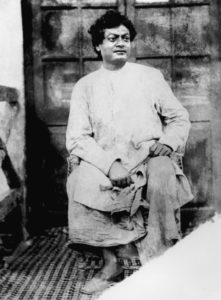 Rai Saheb Kailash Chandra Das and Jatindranath Bose, two Shillong-based devotees of Swamiji, walked along with the cart. Another person, an Englishman on horseback, followed the cart. He was one Norton, a government officer Sir Cotton had assigned to escort Swamiji to Shillong.
Rai Saheb Kailash Chandra Das and Jatindranath Bose, two Shillong-based devotees of Swamiji, walked along with the cart. Another person, an Englishman on horseback, followed the cart. He was one Norton, a government officer Sir Cotton had assigned to escort Swamiji to Shillong.
Norton anxiously approached Swamiji and asked him, “How are you feeling, Swamiji?” Swamiji replied with a smile, “Here is God’s bounty, can anyone feel otherwise? But Mr Norton, it is too much of Sir Henry Cotton to send you down to Gauhati to escort me. My friends have made all arrangements to take me to Shillong.”
Norton very politely said, ‘But His Excellency is much worried about your health. He was collecting day-to-day information about your health from the Assistant Commissioner of Gauhati.”
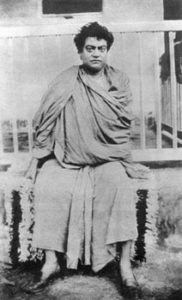 Swamiji replied, ‘Yes Mr Norton, I know that. He has sent me an invitation letter to stay in Shillong as his guest so that I get the benefit of the salubrious climate of the hill station to restore my health. I have expressed my thanks for his kind offer, but my countrymen have already made some arrangements for my stay in Shillong, and I cannot let them down.”
Swamiji replied, ‘Yes Mr Norton, I know that. He has sent me an invitation letter to stay in Shillong as his guest so that I get the benefit of the salubrious climate of the hill station to restore my health. I have expressed my thanks for his kind offer, but my countrymen have already made some arrangements for my stay in Shillong, and I cannot let them down.”
Das, who was accompanying Swamiji, looked at him with heartfelt gratitude. He knew how eagerly and ardently the people of Shillong were waiting for their beloved monk. They reached Shillong safely. Swamiji was lodged at Das’s house near Batti Bazar in Laban.
By order of the Chief Commissioner, it was announced that nobody would be allowed to meet Swamiji that day as his health was not favourable. Sir Cotton sent a government physician to Swamiji immediately after his arrival in Shillong.
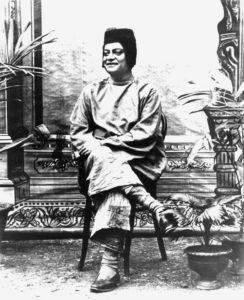 The next morning, Sir Cotton went to visit Swamiji. Though ailing, the latter looked fresh and bright. The former was highly impressed by his extraordinary stature and glowing visionary eyes. He exclaimed, “Welcome to Shillong, the city of Pine, Swamiji!”
The next morning, Sir Cotton went to visit Swamiji. Though ailing, the latter looked fresh and bright. The former was highly impressed by his extraordinary stature and glowing visionary eyes. He exclaimed, “Welcome to Shillong, the city of Pine, Swamiji!”
Swamiji shook his hands with a smile. Sir Cotton said, “Well Swamiji, you have travelled to many countries in Europe and America, and I am afraid, you won’t find anything worthy here in this distant land of ours.”
Swamiji replied, “Each and every corner of my country is equally sacred and charming to me, Mr Cotton. But the main reason behind my coming here is to see a holy man like you. I have heard much about you and your contribution to my country. I feel Shillong is a pilgrimage where I could meet a noble soul like you.”
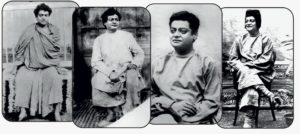 An emotional Sir Cotton said, ‘You are great Swamiji. I am blessed.” [Ref: ‘Shillong-er Bangalee’ by Shyamadas Bhattacharjee and Diamond Jubilee Souvenir (1937-1997) of Shillong Ramakrishna Mission]
An emotional Sir Cotton said, ‘You are great Swamiji. I am blessed.” [Ref: ‘Shillong-er Bangalee’ by Shyamadas Bhattacharjee and Diamond Jubilee Souvenir (1937-1997) of Shillong Ramakrishna Mission]
The two talked for hours regarding the critical problems of India. Swamiji expressed with pain, “I had many things to do for my countrymen, but my time is very short!”
Tears rolled from his eyes. Swamiji emotionally requested Sir Cotton to look after his helpless countrymen. The Englishman was so touched that he could not utter any word and nodded. He could feel the depth of patriotism in Swamiji! It influenced him and at the same time inspired him to do something for the part of the country he was administering.
On April 27, 1901, a public meeting was arranged at Quinton Hall where Swamiji was the chief guest. Sir Cotton presided over the meeting. Many British officers attended. The house was packed.
After inaugurating the renovated Quinton Hall, Swamiji bowed to his Guru Ramakrishna, uttered words of salutation to him, and started: “Life is a pilgrimage – Kamakhya to Kanyakumarika or Chicago to Shillong…” [Ref: The Meghalaya Guardian 12th June 2006 by Rajiv Roy].
In his speech, Swamiji said religion should not be confined to rituals only but expanded to social and cultural activities. Religion is nothing but self-realisation, he said and expressed his desire to have more educational institutions to spread vocational knowledge, which would enable people to stand on their own feet. He discussed thoroughly the Vedic shlokas in Sanskrit and translated them into English to make the audience understand them properly.
His dream of vocational education is partially fulfilled by the Ramakrishna Vivekananda Cultural Centre, Shillong which has been conducting computer training classes for the last two decades successfully in the same complex of the former Quinton Hall where Swamiji delivered his last public speech.
The great historical speech was not recorded properly, which is unfortunate, but it was published in the Khasi monthly journal, ‘U Khasi Mynta’ edited by Babu Hormuroy Diengdoh which was later translated by Swami Gokulananda, secretary of Cherrapunji Ramakrishna Mission, and was published in other journals. This made people understand real patriotism and the real activities of human life.
Diengdoh who was present in that historical meeting expressed his feelings. “Swami Vivekananda addressed a mammoth gathering in Shillong and talked about the value of knowledge and education. When he concluded his valuable speech with a Vedic verse, we (the audience) were completely mesmerised and could feel only that he is a man of ours. No one before him interacted with us so intimately and keenly. Our hearts were filled with inexplicable joy and gratification. We were almost in a state of stupor.”
Despite the utmost care, Swamiji’s health kept deteriorating. He left Shillong for Belur Math on May 12 and passed away on July 4, 1902.
Sir Cotton was shocked by the premature demise of Swamiji, whose words, ‘Please look after my countrymen’ were echoing in his conscience!
Swamiji said, “I have lost all wish for my salvation. I never wanted earthly enjoyments and may I be born again and again and suffer thousands of miseries so that I may worship the only God that exists, the only God I believe in, the sum total of all souls. and above all, my God the wicked, my God the miserable, my God the poor of all races, of all species, is the special object of my worship.”
Sir Cotton, highly impressed by Swamiji, tried to follow in his footprints. He supported the Indian Home Rule movement and served as the president of the Indian National Congress in 1904, one of very few Englishmen to do so. He led the opposition to Lord Curzon’s invasion of Tibet and the partition of Bengal in 1905. Sir Cotton got into serious trouble when he advocated the cause in his 1885 book, New India or India in Tradition (1907).
Upon his return to England, Sir Cotton was elected as a member of parliament from the Liberal Party from Nottingham East in 1906. There, he formed a radical pro-Indian parliamentary group and criticised his own government’s actions in India. He was a true follower of Swami Vivekananda whose message was: To serve man is to serve God.



